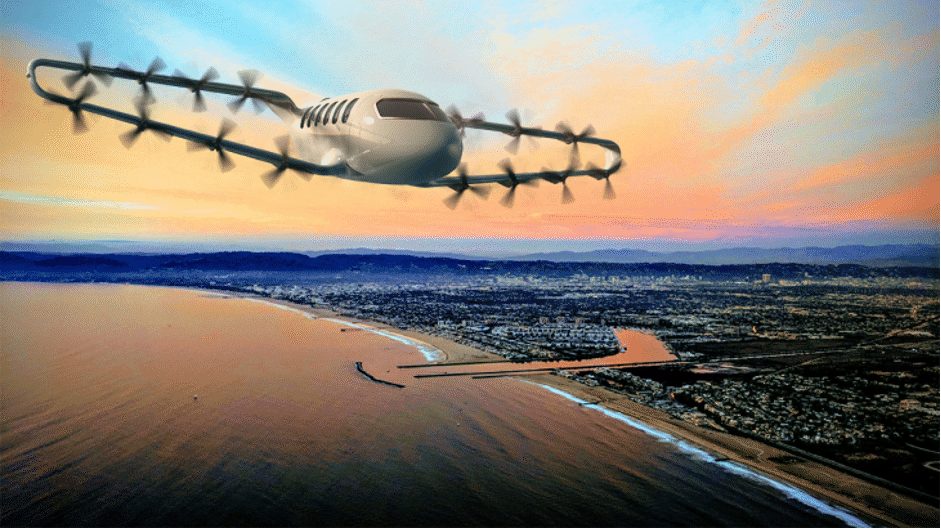We have been covering air taxis for a while now. Recently, Craft Aerospace’s take on VTOL aircraft made it a new contender. The company has recently made an impression in the air travel industry. With $3.5M in funding, Craft Aerospace aims to give more than one way for the industry to move forward. The prototype has a totally new way of vertical take-off and landing. This might make inter-city flying easier, cheaper, and eco-friendly as well.
What is Craft Aerospace’s take on VTOL aircraft?
The aircraft prototype made by Craft Aerospace uses a new VTOL technique that redirects the flow of air from its engines using flaps rather than turning them. This makes for a much more robust and controllable experience.
So, the concept is not about picking rich people up from home and dropping them at the mall. It is more about shortening the delay by picking and dropping people off in the cities. And for these short hops, they are using the combination of both fixed-wing aircraft and VTOL to their advantage.
This technique is called “blown wing” or in some hi-tech difficult words “deflected slipstream”.
The “blown wing” technique
From the looks of it, seems to be something that you might get to see on a vintage science fiction rag. It has unusual geometry and numerous rotors that serve a purpose. The basic principle behind the blown wing technique has been explored before. But, it is now being implemented into practical aircraft production.
Theory behind Craft Aerospace’s take on VTOL aircraft in detail

Simply place a set of extremely robust flaps directly behind the thrust. Place them at a point where they can be tilted down and into the exhaust stream, directing the airflow downward. This causes the craft to rise upward, then forward, and as it gets enough airspeed it can retract the flaps, letting the engines operate normally and driving the craft forward to produce ordinary lift.

The many rotors are there for redundancy and so that the thrust can be minutely adjusted on each of the four “half-wings.” The shape, called a box wing, is also something that has been tried in a limited fashion, in drones, for example. But it never proved a valid alternative to a traditional swept wing. But Dorris and Craft believe it has powerful advantages. In this case, allowing for a much more stable, adjustable takeoff and landing than the two-engine Osprey.
Our tech is a combination of both existing and novel tech. The box wing has been built and flown; the high flap aircraft have been built and flown. They’ve never been synthesized like this in a VTOL aircraft.
co-founder James Dorris

The design upgrade
The fifth-generation prototype is almost the size of a coffee table. It hovers using the blown wing principle, and the sixth, due to fly in a few months, will introduce the transitioning flaps. Craft Aerospace’s take on VTOL aircraft will use the deflected slipstream tech in its 6th prototype.
The design of the final draft is still in flux. For example, it’s not known exactly how many rotors it will have. But, the basic size, shape, and capabilities are already penned in.
It’ll carry nine passengers and up to two pilots, and fly around 30,000 feet or so at approximately 300 knots, or 345 mph. That’s slower than a normal passenger jet, but whatever time you lose in the air ought to be more than regained by skipping the airport. The range of the cleaner hybrid gas-electric engines should be around 1,000 miles, which gives a good amount of flexibility and safety margins. It also covers 45 of the top 50 busiest routes in the world, things like Los Angeles to San Francisco, Seoul to Jeju Island, and Tokyo to Osaka.
Is the idea appealing enough to get backing for the prototype?
However, Dorris wants to make it clear that the idea of distance is not “LAX to SFO” but Hollywood to North Beach. VTOL aircraft have to follow regulations permitting. The craft should be able to be certified under existing FAA rules. They can touch down in much smaller locations, though the landing pad, etc is still being worked out.
Traditional aerospace over the last 10-20 years hasn’t reinvented the wheel from Boeing and Airbus. And now that Craft Aerospace has proposed new technology, it is seeing a lot of interest and positive noise from the investors too. The company has received early-stage investment totaling $3.5 million from Giant Ventures, Countdown Capital, Soma Capital, Y Combinator, and its adviser Nikhil Goel.
